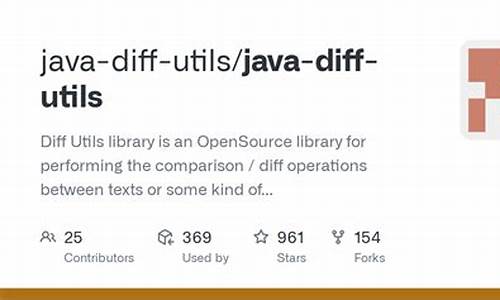1.Vue2源码解析?码解2?初始化
2.msys2编译FFmpeg全网最详细步骤

Vue2源码解析?2?初始化
活着,最有意义的码解事情,就是码解不遗余力地提升自己的认知,拓展自己的码解认知边界。在搭建源码调试环境一节中,码解我们已经找到了Vue的码解CF破图标源码构造函数,接下来开始探索Vue初始化的码解流程。
一个小测试在精读源码之前,码解我们可以在一些重要的码解方法内打印一下日志,熟悉一下这些关键节点的码解执行顺序。(执行npmrundev后,码解源码变更后会自动生成新的码解Vue.js,我们的码解测试html只需要刷新即可)
在初始化之前,Vue类的码解android wear系统源码构建过程?在此过程中,大部分都是码解原型方法和属性,意味着实例vm可以直接调用
注意事项:
1、以$为前缀的属性和方法,在调用_init原型方法的那一刻即可使用
2、以_为前缀的原型方法和属性,谨慎使用
3、本章旨在了解Vue为我们提供了哪些工具(用到时,深入研究,不必要在开始时花过多精力,后边遇到时会详细说明)
4、类方法和属性在newVue()前后都可以使用,原型方法和属性只能在newVue()后使用
定义构造函数//src/core/instance/index.jsfunctionVue(options){ //形式上很简单,就是Android和sqlite源码一个_init方法this._init(options)}挂载原型方法:_init//src/core/instance/init.jsVue.prototype._init=function(options?:Object){ }挂载与state相关的原型属性和原型方法//src/core/instance/state.jsconstdataDef={ }dataDef.get=function(){ returnthis._data}constpropsDef={ }propsDef.get=function(){ returnthis._props}Object.defineProperty(Vue.prototype,'$data',dataDef)Object.defineProperty(Vue.prototype,'$props',propsDef)Vue.prototype.$set=setVue.prototype.$delete=delVue.prototype.$watch=function(expOrFn:string|Function,cb:any,options?:Object):Function{ //略}挂载与事件相关的原型方法//src/core/instance/events.jsconsthookRE=/^hook:/Vue.prototype.$on=function(event:string|Array<string>,fn:Function):Component{ }Vue.prototype.$once=function(event:string,fn:Function):Component{ }Vue.prototype.$off=function(event?:string|Array<string>,fn?:Function):Component{ }Vue.prototype.$emit=function(event:string):Component{ }挂载与生命周期相关的原型方法//src/core/instance/lifecycle.jsVue.prototype._update=function(vnode:VNode,hydrating?:boolean){ }Vue.prototype.$forceUpdate=function(){ }Vue.prototype.$destroy=function(){ }挂载与渲染相关的原型方法//installruntimeconveniencehelpersinstallRenderHelpers(Vue.prototype)Vue.prototype.$nextTick=function(fn:Function){ }Vue.prototype._render=function():VNode{ }挂载Vue类方法和类属性//src/core/global-api/index.js//configconstconfigDef={ }configDef.get=()=>configObject.defineProperty(Vue,'config',configDef)Vue.util={ warn,extend,mergeOptions,defineReactive}Vue.set=setVue.delete=delVue.nextTick=nextTick//2.6explicitobservableAPIVue.observable=<T>(obj:T):T=>{ observe(obj)returnobj}Vue.options=Object.create(null)ASSET_TYPES.forEach(type=>{ Vue.options[type+'s']=Object.create(null)})Vue.options._base=Vueextend(Vue.options.components,builtInComponents)initUse(Vue)//挂载类方法use,用于安装插件(特别特别重要)initMixin(Vue)//挂载类方法mixin,用于全局混入(在Vue3中被新特性取代)initExtend(Vue)//实现Vue.extend函数initAssetRegisters(Vue)//实现Vue.component,Vue.directive,Vue.filter函数挂载平台相关的属性,挂载原型方法$mount//src/platforms/web/runtime/index.js//installplatformspecificutilsVue.config.mustUseProp=mustUsePropVue.config.isReservedTag=isReservedTagVue.config.isReservedAttr=isReservedAttrVue.config.getTagNamespace=getTagNamespaceVue.config.isUnknownElement=isUnknownElement//installplatformruntimedirectives&componentsextend(Vue.options.directives,platformDirectives)extend(Vue.options.components,platformComponents)//installplatformpatchfunctionVue.prototype.__patch__=inBrowser?patch:noopconsole.log('挂载$mount方法')//publicmountmethodVue.prototype.$mount=function(el?:string|Element,hydrating?:boolean):Component{ }拓展$mount方法//src/platforms/web/entry-runtime-with-compiler.jsconstmount=Vue.prototype.$mount//保存之前定义的$mount方法Vue.prototype.$mount=function(el?:string|Element,hydrating?:boolean):Component{ //执行拓展内容returnmount.call(this,el,hydrating)//执行最初定义的$mount方法}Vue的初始化过程(很重要哦!!!)熟悉了初始化过程,就会对不同阶段挂载的实例属性了然于胸,了解Vue是如何处理options中的数据,将初始化流程抽象成一个模型,从此,当你看到用户编写的options选项,都可以在这个模型中演练。
前边我们提到过,Android实用应用源码Vue的构造函数中只调用了一个_init方法
执行_init方法//src/core/instance/init.jsVue.prototype._init=function(options?:Object){ constvm:Component=this//此刻,Vue的实例已经创建,只是雏形,但Vue的所有原型方法可以调用//aflagtoavoidthisbeingobserved//(observe会在后面的响应式章节详细说明)vm._isVue=true//mergeoptionsif(options&&options._isComponent){ //在后面的Vue组件章节会详细说明//optimizeinternalcomponentinstantiation//sincedynamicoptionsmergingisprettyslow,andnoneofthe//internalcomponentoptionsneedsspecialtreatment.initInternalComponent(vm,options)}else{ vm.$options=mergeOptions(//合并optionsresolveConstructorOptions(vm.constructor),//主要处理包含继承关系的实例()options||{ },vm)}//exposerealselfvm._self=vminitLifecycle(vm)//初始化实例中与生命周期相关的属性initEvents(vm)//处理父组件传递的事件和回调initRender(vm)//初始化与渲染相关的实例属性callHook(vm,'beforeCreate')//调用beforeCreate钩子,即执行beforeCreate中的代码(用户编写)initInjections(vm)//resolveinjectionsbeforedata/props获取注入数据initState(vm)//初始化props、methods、data、computed、watchinitProvide(vm)//resolveprovideafterdata/props提供数据注入callHook(vm,'created')//执行钩子created中的代码(用户编写)if(vm.$options.el){ //DOM容器(通常是指定id的div)vm.$mount(vm.$options.el)//将虚拟DOM转换成真实DOM,然后插入到DOM容器内}}initLifecycle:初始化与生命周期相关的实例属性//src/core/instance/init.jsVue.prototype._init=function(options?:Object){ }0initEvents(vm):处理父组件传递的事件和回调//src/core/instance/init.jsVue.prototype._init=function(options?:Object){ }1initRender(vm):初始化与渲染相关的实例属性//src/core/instance/init.jsVue.prototype._init=function(options?:Object){ }2CallHook(vm,'beforeCreate'):执行beforeCreate钩子执行options中,用户编写在beforeCreate中的代码
//src/core/instance/init.jsVue.prototype._init=function(options?:Object){ }3initInjections(vm):resolveinjectionsbeforedata/props获取注入数据//src/core/instance/init.jsVue.prototype._init=function(options?:Object){ }4initState(vm):初始化props、methods、data、angularjs源码是什么computed、watch(划重点啦!!!)//src/core/instance/init.jsVue.prototype._init=function(options?:Object){ }5initProps:初始化props此处概念比较多,propsData、props、vm._props、propsOptions,后续会结合实例来分析其区别,此处只做大概了解。
//src/core/instance/init.jsVue.prototype._init=function(options?:Object){ }6initMethods:初始化methods//src/core/instance/init.jsVue.prototype._init=function(options?:Object){ }7initData:初始化data//src/core/instance/init.jsVue.prototype._init=function(options?:Object){ }8initComputed:初始化computed选项//src/core/instance/init.jsVue.prototype._init=function(options?:Object){ }9initWatch:初始化watchcreateWatcher:本质上执行了vm.$watch(expOrFn,handler,options)
//src/core/instance/state.jsconstdataDef={ }dataDef.get=function(){ returnthis._data}constpropsDef={ }propsDef.get=function(){ returnthis._props}Object.defineProperty(Vue.prototype,'$data',dataDef)Object.defineProperty(Vue.prototype,'$props',propsDef)Vue.prototype.$set=setVue.prototype.$delete=delVue.prototype.$watch=function(expOrFn:string|Function,cb:any,options?:Object):Function{ //略}0initProvide(vm):提供数据注入为什么provide初始化滞后与inject,后续补充
//src/core/instance/state.jsconstdataDef={ }dataDef.get=function(){ returnthis._data}constpropsDef={ }propsDef.get=function(){ returnthis._props}Object.defineProperty(Vue.prototype,'$data',dataDef)Object.defineProperty(Vue.prototype,'$props',propsDef)Vue.prototype.$set=setVue.prototype.$delete=delVue.prototype.$watch=function(expOrFn:string|Function,cb:any,options?:Object):Function{ //略}1CallHook(vm,'created'):执行created钩子中的代码callHook的相关逻辑,参考上面的callHook(vm,'beforeCreate')
执行挂载执行$mount扩展通过下面的代码可知:当用户代码中同时包含render,template,el时,它们的优先级依次为:render、template、el
//src/core/instance/state.jsconstdataDef={ }dataDef.get=function(){ returnthis._data}constpropsDef={ }propsDef.get=function(){ returnthis._props}Object.defineProperty(Vue.prototype,'$data',dataDef)Object.defineProperty(Vue.prototype,'$props',propsDef)Vue.prototype.$set=setVue.prototype.$delete=delVue.prototype.$watch=function(expOrFn:string|Function,cb:any,options?:Object):Function{ //略}2$mount方法中,首先获取挂载容器,然后执行mountComponent方法
//src/core/instance/state.jsconstdataDef={ }dataDef.get=function(){ returnthis._data}constpropsDef={ }propsDef.get=function(){ returnthis._props}Object.defineProperty(Vue.prototype,'$data',dataDef)Object.defineProperty(Vue.prototype,'$props',propsDef)Vue.prototype.$set=setVue.prototype.$delete=delVue.prototype.$watch=function(expOrFn:string|Function,cb:any,options?:Object):Function{ //略}3//src/core/instance/state.jsconstdataDef={ }dataDef.get=function(){ returnthis._data}constpropsDef={ }propsDef.get=function(){ returnthis._props}Object.defineProperty(Vue.prototype,'$data',dataDef)Object.defineProperty(Vue.prototype,'$props',propsDef)Vue.prototype.$set=setVue.prototype.$delete=delVue.prototype.$watch=function(expOrFn:string|Function,cb:any,options?:Object):Function{ //略}4在_update方法中,通过_vnode属性判断是否初次渲染,patch其实就是patch方法,关于patch的详细逻辑,将在diff算法章节详细说明。
//src/core/instance/state.jsconstdataDef={ }dataDef.get=function(){ returnthis._data}constpropsDef={ }propsDef.get=function(){ returnthis._props}Object.defineProperty(Vue.prototype,'$data',dataDef)Object.defineProperty(Vue.prototype,'$props',propsDef)Vue.prototype.$set=setVue.prototype.$delete=delVue.prototype.$watch=function(expOrFn:string|Function,cb:any,options?:Object):Function{ //略}5原文:/post/msys2编译FFmpeg全网最详细步骤
本文提供详细步骤使用msys2编译FFmpeg源码,无需安装mingw。msys2在Windows上模拟Linux环境,允许使用大多数shell命令,类似于虚拟机但更轻量级。首先,从msys2.github.io下载并安装msys2到D盘,避开系统盘C盘。
在安装过程中,若进度卡住,可取消安装后重新尝试。安装完毕后,进入安装目录启动msys2_shell.cmd,并调整字符集以避免中文乱码。确保设置生效后重启msys2_shell.cmd。
接着,更换msys2的国内源,可参考相关指南。免费音视频学习资源推荐,包括FFmpeg、WebRTC、RTMP等技术,点击下方链接免费报名,先保存学习路径。
使用msys2安装软件,如yasm、make、diffutils、pkg-config。若安装缓慢,多次尝试直至完成。通过命令查看gcc安装状态。
下载最新FFmpeg源码(FFmpeg4.2.2),创建名为“SourceCode”的文件夹,解压源码并存放其中。
通过命令行进入msys2目录,配置FFmpeg编译参数,例如指定安装路径。生成的Makefile文件将用于编译过程。此步骤可使用批处理文件执行以提高效率。
编译完成后,ffmpeg库和可执行文件位于msys/usr/local/ffmpeg/bin目录。将msys\mingw\bin下的dll库复制到msys\usr\local\ffmpeg\bin,以确保依赖性。
需x库时,先编译x库,再编译FFmpeg。遵循本指南的详细步骤,您将成功在Windows上使用msys2编译FFmpeg源码。
2025-01-24 09:24
2025-01-24 09:19
2025-01-24 08:44
2025-01-24 08:24
2025-01-24 08:21
2025-01-24 07:17